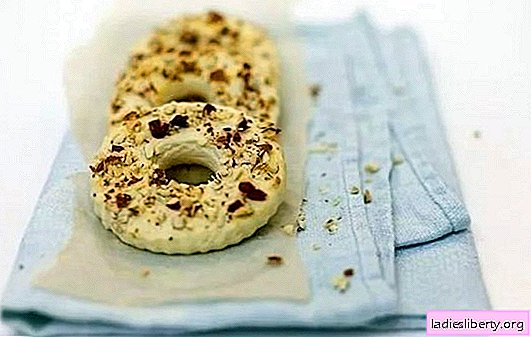
Creating a spectacular garden is not an easy task. Especially if you are an amateur or a beginner. But, one of the revered plants among experienced gardeners, due to its characteristics, is weigela.
Description and Weigel Growth Conditions
Weigela is credited to the genus of bushes of the family Honeysuckle (Caprifoliaceae). It is a moisture-loving and conditionally shade-tolerant, deciduous, upright bush. It has such advantages as: elegance, ease of reproduction and care.
The name of the plant was in honor of the German chemist, botanist and pharmacist Christian Ehrenfried von Weigel. In the wild, weigel is found in the Far East of Russia, in East Asia. The genus is estimated at 15 species. Usually, 7 species and about 10 varieties are cultivated in a culture, which are distinguished by their high decorativeness.
A characteristic quality of weigela is flowering. Namely, that it can bloom twice in one vegetative season. The first time flowers bloom in late spring and early summer. Abundant flowering, funnel-shaped flowers, bell-shaped, single or one or six on the shoots of last year, in the axils of the upper leaves. The next - at the end of summer and beginning of autumn on the shoots of this year, less magnificent.
Flowers can be from milky, pink to amaranth and carmine red. It so happens that during flowering, the flower changes hue from light to dark, intense. Flowering lasts 3-4 weeks. Fruits are capsules with small, often winged seeds.
It prefers rich, friable, loamy soil (pH 6.5-7.5). In weakly acidic, peaty soils, Weigel Middendorffiana and the “wild” species will feel good. Although the shrub can grow in places unlit by the sun, this does not mean that it is shade-loving. For full growth and flowering of weigel, a bright, diffused light is required. In the middle lane it’s not a sin to plant in a sunny place, on the south side. The place should be protected from the wind, especially the north - in a draft, flowers and buds simply fly around.
Weigela planting
At the time of purchase, give preference to seedlings whose age is from 3 years. It is young, but not too bush, it adapts well in a new place.
It is advisable that they be grown in your climate region or strip.
The best planting time is spring, March-April. The interval between the start of soil warming and swelling of the kidneys. Landing in the fall is highly undesirable.
Carefully choose a place according to the above recommendations. A pit is dug out based on the size of the plant itself. On average, with a diameter of 50-60, a depth of 40-50 centimeters. If you plant several bushes, maintain a gap of 2-3 meters between them.
Compact varieties can be placed 1-1.5 meters apart. In the case of landing in unsuitable soils, a pit is dug up with a diameter of more than 1 meter, and the original soil is replaced with a suitable one. The bottom of the pit loosens. Drainage is possible. If the soil is not sufficiently water-absorbing, this is corrected by the addition of high peat.
Laying the bush in a hole, carefully spread the roots and fill the hole with prepared soil. It is best to perform surgery in pairs. Make sure there are no air voids between the roots. It is useful to soak the rhizome in the root formation stimulator before planting and treat the plant with growth regulators. This is done to reduce stress and accelerate the rooting process.
After filling the soil, the bush is watered. If he sank, add more earth on top. Deepening the root neck by 1-2 centimeters is not critical. The trunk circle is mulched with peat, wood chips or sawdust.

Care and propagation of Weigela
The care is simple, consists in timely pruning, fertilizing and watering.
Like all shrubs, weigel should be trimmed. This is done for sanitary and decorative purposes. In early spring, frozen, deformed or broken shoots are cut from young bushes. Adult bushes form in the summer, after the first flowering.
If young shoots appeared, then pruning is not performed, since secondary blooming is performed on them. Also, every 3-5 years an adult plant needs a rejuvenating pruning. All branches older than three years are cut, the rest are cut to 1/3 of the length.
Weigel should be fed three times a season with complex fertilizers. The first time before the start of the growing season, the second time during the laying of buds, the third - under the autumn digging. If during planting, compost was introduced under the root, then the plant can not be fed for two years.
Do not let the plant dry. In nature, it grows in humid conditions and needs regular watering. If the area around the plant is mulled, watering is less common.
For winter, it is advisable to shelter bushes from frost.
Weigel propagated by seed and cuttings. They will not cause any difficulties.
Cuttings can be harvested twice a season. The first time in March, before the swelling of the kidneys, the second time in early summer. The whole process can take up to 3 years, so be patient.
1. Choose a vegetative, lignified shoot. Cut into cuttings of 10 centimeters, which are buried in a bowl with wet sand and peat in equal proportions. After the appearance of sprouts on the cuttings, they can be planted in a loose substrate of their garden soil, peat and sand (2: 1: 1) in containers or boxes.
Pinch the shoots when they reach a height of 5 centimeters. Next spring, plants are pruned and transplanted into suitable pots. The care is the same, without pinching. By autumn, the bush reaches a height of 50-70 centimeters and is ready for planting in the open ground next year. Use root stimulants.
2. During the summer harvest of cuttings, young, not lignified shoots are selected. They are also cut themselves, leaving two leaves on each handle. Otherwise, the technology is identical.

Varietal weigels are best propagated precisely by cuttings, in order to preserve the signs of the mother plant. Bloom usually after 3-4 years.

The seed propagation method is also not particularly difficult. The easiest way to collect seeds and sprinkle them around the plant itself.
In the spring, after germination, select the strongest seedlings and grow them for 2 years. After which the plant is transplanted to its permanent place. It will bloom in 5-6 years.
Difficulties in growing weigels: pests and diseases
It is often affected by aphids, caterpillars, thrips and spider mites, larvae of a horsetail or a bear.
To remove insects, use complex insecticides on the leaf and under the root. In case of illness, treatment is carried out with fungicides, milk of lime or Bordeaux liquid.
The plant cannot be called tender, but care should be taken.
Weigela fits perfectly into the composition with barberry, Japanese quince, or spirea, rosette, felt cherry and colander. In addition, the group of weigels themselves of different varieties in one place looks impressive.
So, you will definitely not regret the efforts expended in the acquisition, planting and maintenance of this wonderful shrub. And you will enjoy its impressive flowering. You just need to show a little patience.











